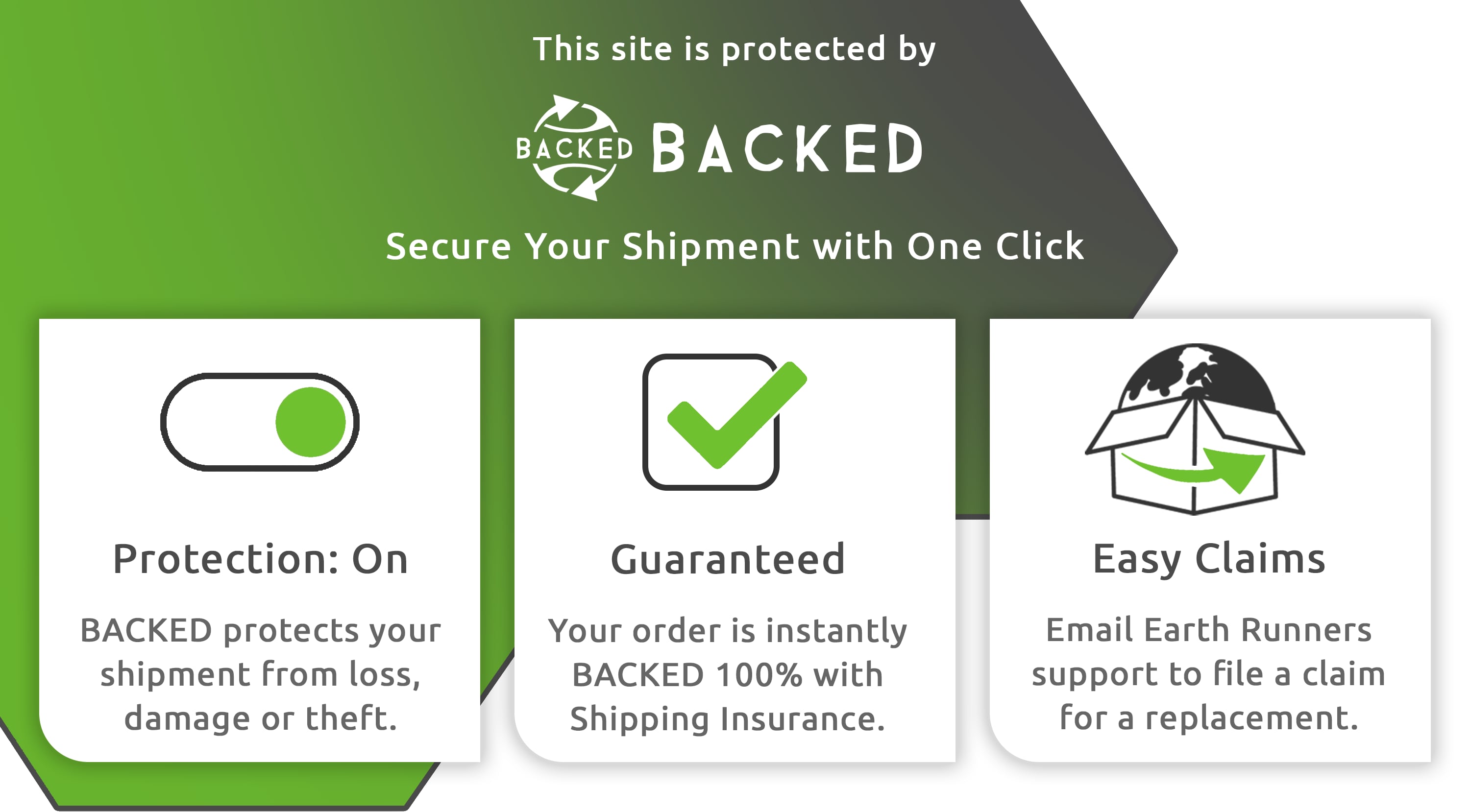Best Adventure Sandals Checklist


 |
 |
 |
With so many options on the market, it can be hard to know which adventure sandal is right for you. This checklist will outline the various aspects you need to consider to determine your ideal outdoor adventure sandal.
What to Consider When Looking for Adventure Sandals
Design: Is the sandal design one that has a long history of use for running, hiking, and outdoor adventure applications?

Secure, comfortable, and durable adventure-ready sandals are hard to come by. It is important to thoroughly vett the design to ensure it will hold up on your runs, hikes, and exploits while staying securely and comfortably adhered to your foot.
Huarache-style running sandals have arguably the longest history of being used for epic outdoor pursuits including running hundreds of miles at a stretch across various terrain. When considering an adventure sandal, compare the design to that of the ancient time-tested huarache sandal design to see how their lacing system compares to ensure it will hold up on your adventures.
Necessary features to facilitate the best adventure sandal experience
Think about the outdoor sandal adventures you undertake in your sandals. Consider the terrain, conditions, pack weight, distance and the elevation change involved in the sorts of activities you want to do while wearing your adventure sandals. Decide what is needed and the order of importance of the following: protection, traction, footbed, shock-absorption, connectivity, lace security, water performance, and simplicity. Let's start by looking at the sole.
Outdoor Adventure Sandals for Men and Women
Protection and Comfort: of the sole

People are drawn to the adventure sandal experience for the added proprioceptive awareness, absence of an enclosed upper (the part of a shoe that covers the top of the foot), and relatively responsive soles. Depending on the outdoor sandal adventures to be had, one needs to decide the level of protection needed to keep one's feet in touch with the ground, while remaining comfortable. A sole's protection and comfort ranges from more minimal and responsive, to luxurious and shock-absorbing. If you go on a hike wearing adventure sandals that are too minimal for your foot strength to handle, your feet will be overly strained and stiff, creating a lack of mobility. This can result in injury.
On the opposite end of the spectrum, when you choose a sole that is too thick for your outdoor adventure needs, it will hinder the precision and efficiency of your bio-mechanics. An overly muted sole–in relation to your body mass, foot strength, and the terrain profile–doesn't allow enough biofeedback to maximize your efficiency and coordination. This causes your feet to push through the soles in search of a hard, stable platform to react to, leading to excessive energy loss into the mushy sole and more clumsy movement which can also lead to injury.
Protection and comfort underfoot can be boiled down to three factors: density, thickness, and shock absorption. The longer the distance–and rougher the terrain–the more sandal you should consider underfoot to help reduce the impact on the body and allow your feet to relax into each step. Here is a look at some different adventure sandal sole archetypes for different uses and lifestyles.
- Density: High. A stiff and dense sole allows the sandals to be as thin as possible without sacrificing performance. The stiff sole will not flop or fold during use, all the while maintaining sufficient puncture protection on most terrains. Laces remain strong and securely anchored to the rigid thin sole. Best suited for individuals with a higher level of foot fitness/strength as well as proper form.
- Shock absorption: Low. This makes for the most responsive soles, well suited for technical adventures requiring precise articulation and agility.
- Thickness: Thin. Minimal stack height to maintain the lowest center of gravity for added balance on steep grade terrain.
- Density: Medium. Most people who see the benefit of wearing minimal footwear regularly seem to gravitate to medium-density soles to offer some level of forgiveness to make for a more appealing lucid barefoot experience.
- Shock absorption: Medium-Low. Enough to take the edge off while not removing too much bio-feedback to alter your bio-mechanics for the day to day activities.
- Thickness: Medium-Thin. The most approachable minimal experience.
- Density: Low. Offering comfort and low weight but not a lot of puncture protection.
- Shock absorption: Medium. Medium-thick low-density sole which offers the medium shock absorption that you would expect in an average sandal.
- Thickness: Medium. Low density, medium shock absorption and medium thickness to achieve lightweight comfort while maintaining a minimal experience.
- Density: Mixed - High & Medium-Low. High density outsole for performance and protection with a medium-low density midsole for compact comfort.
- Shock absorption: Medium-High. Medium thickness midsole layer with medium-high shock absorption to keep you comfortable on most terrain and distance while preserving as much responsiveness as possible.
- Thickness: Medium-Thick: Comparable to the most minimal trail running shoe stack height, good to train in but may be limiting on your more ambitious adventures.
- Density: Mixed - High & Low. High density outsole for performance and protection with a low density midsole for max comfort and weight savings.
- Shock absorption: High. Thick midsole layer to make for the most luxurious high shock-absorption soles to keep you comfortable on the most epic terrain & distances.
- Thickness: Thick: Pretty much the thickest sandal that still makes sense before it starts to feel like you are on stilts. Comparable to the average minimal trail running shoe stack height. Suited for the most epic sandal adventures.

Traction: For sure-footing.
The outsole–the part that comes into contact with the ground– should have a tread pattern and composition that resembles outsoles of other hiking shoes, running shoes, and adventure shoes designed for the type of activities you partake in.
Compound:- EVA foam: ~50% the weight that of solid rubber. Lighter, less grip and longevity–but mold to the shape of your foot.
- Hybrid: EVA Foam / Rubber: ~30% the weight that of solid rubber. Medium weight, grip, longevity and molding ability to the shape of the foot.
- Rubber: Heaver, more grip and longevity.
- Won't mold to the shape of your foot if the outsole rubber makes up the majority of the sole's composition in volume.
- Softer rubber-dominant compounds are best for gripping to wet and slick rock.
- Eg. Vibram Megagrip Compound
Tread–The height and pattern of the lug tread profile
- Lug Height:
- Taller (Heavier): Enhance traction on loose gravel and mud.
- Shorter (Lighter): Lower stack height, well suited for urban surfaces.
- Lug Spacing:
- Greater: Mud shedding ability with less rocks getting lodged in the tread.
- Less: More precise grip on surfaces with finer features.
- Lug Area:
- Less dense lug pattern: Lighter
- More weight transfer through less tread lug area allowing deeper penetration of the lugs into variable natural terrain–allowing for enhanced trail traction.
- More dense lug pattern: Heavier
- More tread lug area contacting the ground of flat man made surfaces–allowing for the potential of a greater grip on flat ground.
 Footbed: textured and moisture-wicking material for water sandal adventures
Footbed: textured and moisture-wicking material for water sandal adventures
To maximize the adventure-ready potential of an outdoor sandal, adherence of the foot to the footbed material is crucial–whether in dry, sweaty, or soaking wet conditions. Given the minimal upper of outdoor adventure sandals, security and stability rely on having a grippy footbed material to keep the foot secure. A wicking footbeds ability to pull moisture away from the foot and into its membrane, helps to minimize the loss in traction caused by the presence of water. By preventing moisture accumulation and pooling under the foot, the texture of the footbed is able to maintain traction in both wet and dry conditions. This kind of footbed combined with their open toe advantage to tread through water and shed it quickly gives the advantage over other types of footwear in an amphibious environment.
Connectivity
True adventure sandals are minimal by their very nature, exploring Earth with no restrictive upper enclosure. Anything which helps preserve the primal freedom of being barefoot in ancient adventure sandals will promote the sense of connection experienced when adventuring in sandals. The connectivity of adventure sandals is a product of their open toe, ground feel and conductivity, that resemble both the physical and electrical (earthing) experience of being barefoot. Minimalist sandals offer the physical sensation of being barefoot, while earthing sandals provide the ancient primordial component of being connected to the earth, same as all life has evolved on this planet throughout time. Minimal grounded sandals reduce interference between your foot and the Earth for to maximize the sense of connection experienced when adventuring.
 Adventure Sandal Upper: Secure Yet Ergonomic
Adventure Sandal Upper: Secure Yet Ergonomic
The function of an adventure sandal upper is a challenging one–to maintain as much barefoot freedom as possible, with maximum security, that can match or better regular all-terrain footwear.
To ensure confidence, the adventure sandal upper must effectively secure the foot in both the front-to-back and lateral directions under all terrain scenarios. Security is maximized by triangular anchor junctions between the lacing upper and the sandal sole. The closer the upper anchors are on either side of the adventure sandal to the longitudinal axis of the foot, the more lateral security it will offer the foot.
With a minimal upper, the materials used for the adventure sandal upper (laces) must offers high tensile strength and longevity with minimal stretch. The fastening mechanism must lock to ensure no slippage or loosening.
 One of the main advantages of adventure sandals -vs- a running/hiking/adventure shoe is the enhanced mobility of the foot. The adventure sandal upper needs to be designed to allow for maximum freedom to preserve this functional edge. The huarache running sandal design offers the most simple and effective means to secure the foot while allowing max freedom of the toes to fully extend and forefoot to splay naturally. Thong-less adventure sandal designs are not able to secure the forefoot without compressing and restraining the toes and forefoot, limiting their ability to fully splay out upon impact with the ground. In addition, thong-less adventure sandals struggle to keep the forefoot as secure as thong adventure sandals on sideways sloping terrain, as there is nothing for the toes to grip onto laterally to prevent the forefoot from from falling off the edge of the sandal footbed and rotating itself inside of an over-the-foot lacing system.
One of the main advantages of adventure sandals -vs- a running/hiking/adventure shoe is the enhanced mobility of the foot. The adventure sandal upper needs to be designed to allow for maximum freedom to preserve this functional edge. The huarache running sandal design offers the most simple and effective means to secure the foot while allowing max freedom of the toes to fully extend and forefoot to splay naturally. Thong-less adventure sandal designs are not able to secure the forefoot without compressing and restraining the toes and forefoot, limiting their ability to fully splay out upon impact with the ground. In addition, thong-less adventure sandals struggle to keep the forefoot as secure as thong adventure sandals on sideways sloping terrain, as there is nothing for the toes to grip onto laterally to prevent the forefoot from from falling off the edge of the sandal footbed and rotating itself inside of an over-the-foot lacing system.
Simplicity: For ease-of-use
Simplicity is best. Less components means less opportunity for the components to fail, and makes the adventure sandals easier to use and repair.
Simpler technology requires and builds more movement, mobility, and strength. Avoid over-engineered technology that interferes with biomechanics and bodily ancestral wisdom honed-in over thousands of years.










